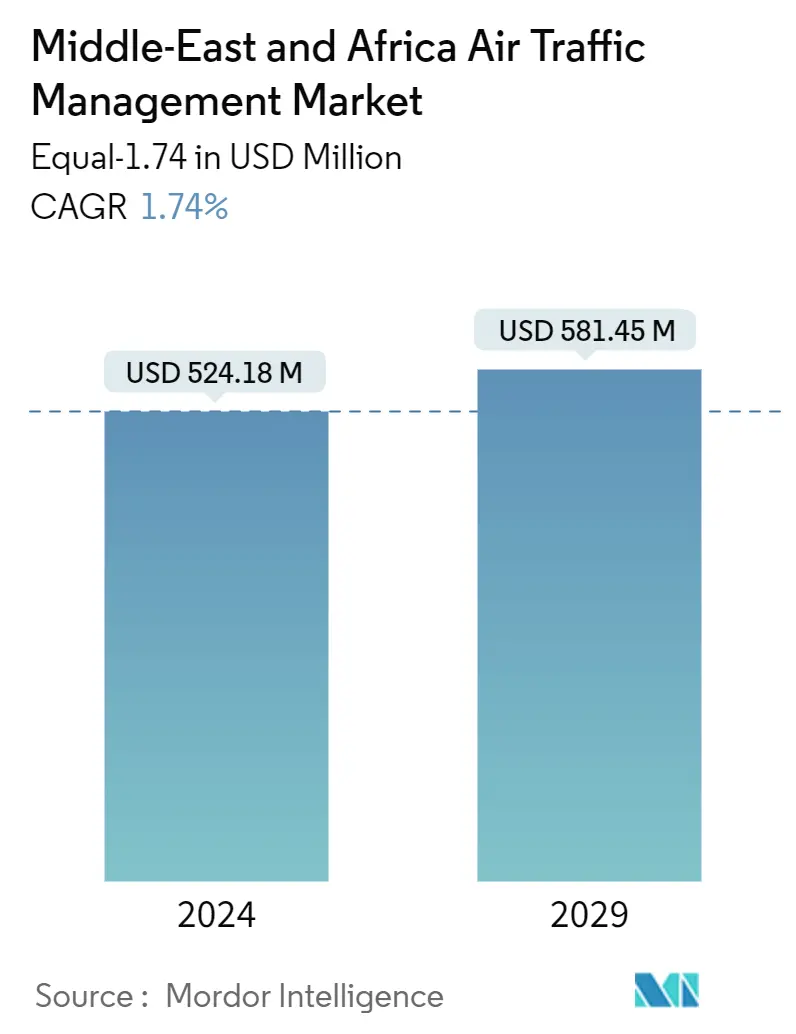Market Size of Middle-East And Africa Air Traffic Management Industry

| Study Period | 2019-2029 |
| Base Year For Estimation | 2023 |
| Market Size (2024) | USD 524.18 Million |
| Market Size (2029) | USD 581.45 Million |
| CAGR (2024 - 2029) | 1.74 % |
| Market Concentration | Medium |
Major Players
*Disclaimer: Major Players sorted in no particular order |
Need a report that reflects how COVID-19 has impacted this market and its growth?
Middle-East and Africa Air Traffic Management Market Analysis
The Middle-East And Africa Air Traffic Management Market size in terms of Equal-1.74 is expected to grow from USD 524.18 million in 2024 to USD 581.45 million by 2029, at a CAGR of 1.74% during the forecast period (2024-2029).
The robust economic development in the Middle East and African region is fueling increased air travel demand, necessitating advanced air traffic management systems. Substantial investments in aviation infrastructure by governments to modernize airports and enhance airspace management contribute to the growth of the air traffic management market. The adoption of cutting-edge technologies such as AI, automation, and satellite-based navigation systems improves the efficiency and safety of air traffic management in the region.
The growth in passenger traffic is inviting investments in the market. The growing emphasis on modernizing air traffic management infrastructure is also driving the market’s growth. With a positive outlook for the global air passenger traffic numbers in the next 10 years, airlines are increasing their fleet size to cater their services to more passengers. Airlines are procuring more aircraft and adding more routes, thereby increasing the number of flights to handle for the airports. As airspaces become busier, the necessity for better airspace management increases.
The growth in passenger traffic has necessitated the construction and expansion of new airports, which has resulted in the demand for new air traffic management (ATM) infrastructure and capacity improvements in the existing ATM systems. However, one key restraint to the market is the diverse regulatory landscape across the Middle East and Africa, leading to inconsistencies in airspace traffic management and coordination. This regulatory complexity can hinder the seamless integration of air traffic management systems, limiting the potential for streamlined and efficient operations. Another significant challenge is the limited or outdated infrastructure in certain countries, especially in Africa, which can impede the implementation of advanced air traffic management technologies.
